15 Murphy’s Oil Soap Uses Around the Home
Author: Anne Cowart | Editor: Omar Alonso
Review & Research: Jen Worst & Chris Miller
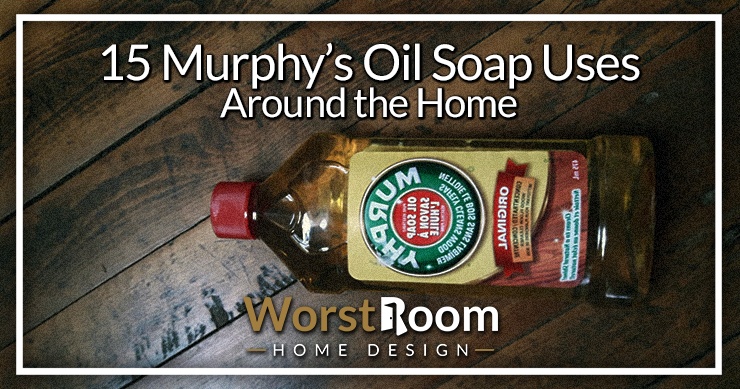
Did you run out of your all-purpose cleaner at home? If you have a bottle of Murphy's Oil Soap lying around, you can use that instead. Murphy's Oil Soap is a potassium vegetable oil-based cleaner originating from Germany.
This cleaning solution has a long history of use in the United States, with the product launching in 1910. Let's dig into the many Murphy’s Oil Soap uses discovered over the past 100+ years.
How to Use Murphy’s Oil Soap in 15 Ways
Have you ever wondered what is Murphy’s Oil Soap used for? The first uses of the soap were in cleaning applications involving log cabin flooring. However, people figured out it has plenty of uses around the home, and we'll break them down for you in this post.
1) Wood Panel Cleaner
As mentioned, the original use of Murphy's Oil Soap was for cleaning wood cabins, so it's safe to use it when cleaning your treated wood panels. Combine a ¼ cup of it with warm water, and you're ready to wash away grit and grime from your wood panels. Wet a rag, wring it out, and work from top to bottom to avoid drip stains on the boards when you finish.
2) Wooden Cabinet Cleaner
Murphy's is fantastic at removing grease and grime from dirty kitchen cabinets. Mix ½ cup of the oil soap in a bucket of warm water, wet a rag, wring it out, and wash the cabinet inside and out. Wet another rag in a bucket of clean water and use it to rinse out the soap residue before drying with a third clean rag.
3) Wood Furniture Cleaner & Polish
Use Murphy's as a substitute for your regular wood furniture polish. Add a few drops to a clean rag and buff out the furniture to create a shiny finish.
4) Stainless Steel Appliance Cleaner
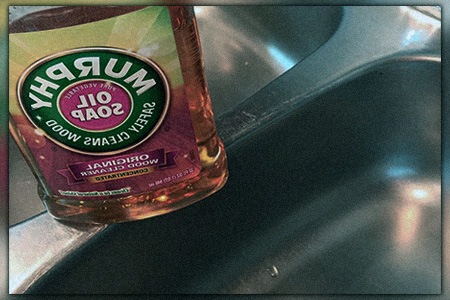
Murphy's Oil also cleans stainless steel appliances, restoring them to a shiny finish. It's a much better choice than using Windex for the job. You should never use Windex on stainless steel due to the ammonia content. Combine ½ cup of water and ½ teaspoon of Murphy's oil in a spray bottle. Spray it on stainless steel and wipe it away with a damp sponge. Dry the surface with a clean towel when finished.
5) Clothing Stain Remover
Use Murphy's to get grease stains out of your clothing. Add a drop or so onto the stained areas and let it sit for an hour before throwing it in the wash as normal. The oil lifts the stain, leaving your clothing looking like new. If you have a tough stain, work the oil into the spot, and you'll find it lifts during the wash.
6) Carpet Cleaner
If you have a grease stain on the carpet or rug, gently work a few drops of Murphy’s Oil Soap into the affected area and let it sit for 30 minutes. Do some blotting and rinsing, then vacuum the carpet, and see that the oil has lifted the stain.
Like most Murphy's Oil Soap uses, you should test this on a hidden part of the carpet first to make sure no discoloration occurs. You should be fine but always play it safe.
7) Car Interior Cleaner
Mix a teaspoon of Murphy's into a cup of lukewarm water and add it to a spray bottle. Spray down the steering wheel, dashboard, console, and floor mats and wipe with a clean cloth for a clean finish.
8) Sticker & Label Remover
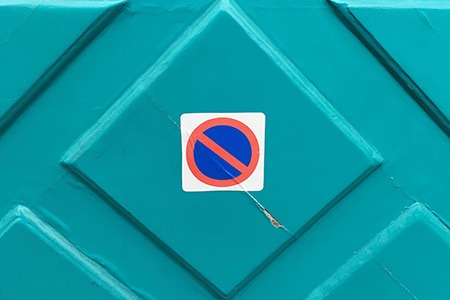
If you remove a sticky label from an appliance and it leaves behind the adhesive, use Murphy's to remove the residue. Place a few drops of Murphy’s Oil on the area and rub it out with a dry sponge or cloth.
9) Paint Brush Cleaner
If you have dirty watercolor or oil art paintbrushes, wash them clean with Murphy’s Oil. Soak the brushes in the oil for a few days, then rinse them clean with water. You can do this in a cup or an upright ziplock bag.
10) Removing Pencil & Crayon Marks
If your kids went crazy with crayons or pencils, wipe away the marks with Murphy's. Mix ½ cup of water with ½ teaspoon of this oil soap and add it to a spray bottle. Spray it on the marks and wipe them away using a dry sponge or microfiber cloth. Depending on the extent of the marks and the color, you might need a few applications to wipe them away.
11) Horse Tack Cleaner
Murphy's Oil Soap is a great tack cleaner for horse owners. Clean the saddles and bridles with a solution of ½ teaspoon of Murphy’s Oil and ½ cup of water. The soap gives them a polished, professional look. In the same vein, some people have used it to clean automotive parts like disc brakes and hub caps, and when diluted used as a lubricant as well.
12) Glass Stovetop Cleaner
If you ran out of Windex, clean your stovetops with Murphy's instead. Fill a spray bottle with a teaspoon of Murphy's and two cups of warm water. Add to a spray bottle and spritz the glass surfaces. The soap washes away stubborn grease and grime. After you finish, rinse with fresh water and wipe with a dry cloth. You should even see an improvement in the cloudiness of the stove top.
13) Leather Cleaner
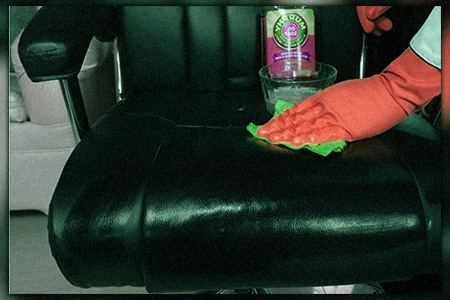
Add three teaspoons of Murphy's to two cups of water and fill a spray bottle. Spritz it on non-staining, treated leather and use it to wipe away grit, grime, and dirt. After cleaning, cleanse the leather piece with fresh water and dry it with a buffing cloth. Use it to clean couches, leather straps, boots, and any treated leather product. Be aware that some people have the opinion that you shouldn’t use mineral oil on leather.
14) Ceramic Tile Cleaner
If you run out of your usual tile cleaner, get ready to discover another of the secret Murphy's Oil Soap uses. Add a teaspoon of soap per cup of water and use it to clean your bathroom or kitchen tiles. It works on all tiled surfaces, leaving a streak-free finish to any room.
It's also great for spot-cleaning stains and grease on tiles. Spray the solution on the affected area, wait 15 minutes for it to lift the stain, and wipe it away. Add half a cup of white vinegar to the solution for extra grease-cutting power.
15) Floor Cleaner
Murphy's works great as a tile cleaner and is suitable for use on all flooring systems, including laminate and vinyl. Mix a ¼ cup of Murphy's Oil in a bucket of warm water and wring your mop properly before mopping the floor.
Can I Use Murphy's Oil Soap on Hardwood Flooring?
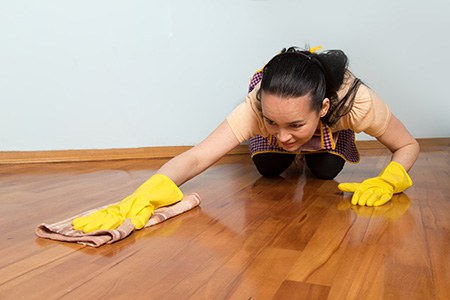
Yes, this is the main and most intended Murphy's Oil Soap uses, as seen in the marketing and on the label. The ingredients in Murphy's Oil Soap are 98% natural, so it's a great choice for cleaning wood flooring. In fact, cleaning wood floors was one of the earliest uses of the soap, with log cabin owners trusting it to keep their homes looking great.
Some may argue that there are better choices for hardwood flooring as Murphy's Oil leaves an oil residue on the floors, which builds up over time, accumulating dirt and grime. This hasn't been my experience, using it hundreds of times on sealed and unsealed wood flooring. It tends to impregnate the wood, acting as a sealant of sorts, too.
Of course, we suggest you only use this strategy on sealed hardwood floors, not untreated boards, unless you test it out first on a hidden portion of your flooring to make sure no discoloration or other problems arise.
Murphy's Oil really brings out the color and texture of the wood on hardwood flooring after an application. It's a good idea to do it occasionally if you want your floors to look their best for special occasions. To mop with it as a cleaner, make sure you dilute it as indicated on the label.
Murphy's acts more like a polish than a cleaner if you don't dilute it, so you can expect the wood's natural look to shine after an application. However, we warn you to refrain from being tempted to use it too frequently. You also can't expect Murphy's to buff out scratches in laminate floors or wood floors either.
How to Clean Harwood Floors with Murphy's Oil Soap
You'll use a basic mopping method when using Murphy's Oil to clean your hardwood floors. You'll get great results, and a lasting, shiny finish for your hardwood floors, bringing out the natural visual and color of the wood after the application.
Dilute a quarter cup of Murphy's Oil Soap in a gallon of warm water. Sweep the floor clean to remove any debris before you start mopping. Dip whatever type of mop you prefer in the solution and wring it out as much as possible. Don't slop it onto the floor if it's too wet. The water gets between the seams in the boards, causing them to warp and expand.
Wear clean shoes when working, or mop in your socks to prevent footprints on the freshly mopped floors. Start from one corner of the room furthest from the door and work your way to the exit using wide, sweeping strokes.
Stop every few feet to rinse out the mop and wring it. This action removes the fouled water in the mophead, ensuring you get a streak-free finish from the task. Repeat as necessary until you finish mopping the room.
Wait to walk back over the floor until it's dry, or you'll leave footprints when it dries. Drying times vary depending on the weather in your area. In warm weather, you can expect it to dry in around 15 to 20 minutes.
What Does Murphy’s Oil Soap Do?
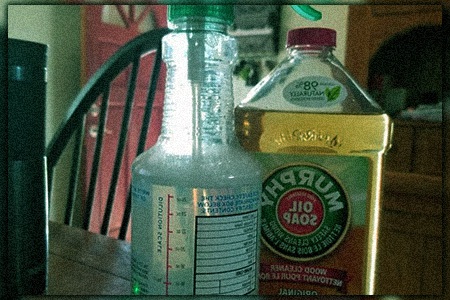
Murphy Oil Soap is manufactured by Colgate-Palmolive (you probably recognize those names for their toothpaste and dish soap products). It was created by an unknown immigrant from Germany into the USA. In 1910, Jeremiah Murphy bought the formula and his family ran the company for over 80 years.
The soap has a base made from potassium vegetable oil, but has other chemicals such as sodium EDTA, propylene glycol, and then water, some surfactants, and then fragrance. This simple recipe makes it useful for cleaning all manner of surfaces and residues since it lacks petroleum oil. The key benefit in that regard is that it doesn’t form a sludge as it picks up dirt and grime.
There are many Murphy's Oil Soap uses. People have used to clean car parts, saddles, plaster molds, paint brushes, clay potter’s wheels, and more. It can act as a lubricant, it can dissolve water-based inks, and has even been used as a insecticidal soap spray.
But mainly the ideal use for the product, or at least its intended use in alignment with the marketing, is as a wood cleaner and polisher. It can restore color and luster, adding a slight sheen and glow to flooring and furniture.
Key Takeaways Regarding Uses for Murphy's Oil Soap
Let’s go over the main points from above again to summarize and reiterate them:
- Murphy’s Oil is a traditional oil-based soap with a long heritage of use.
- The original use of the soap was for cleaning wood cabins, so it works great as a multi-purpose cleaner.
- There are over a dozen cleaning applications for Murphy's in your home.
- Murphy’s Oil contains 98% natural ingredients, so it's safe to use around people and pets and a great alternative to chemical-based cleaners.
- You can use Murphy’s Oil on tiled and laminate or vinyl flooring. However, we recommend against using it on hardwood sources.
- The oil in the formula might attract grime to hardwood floor surfaces. Follow our guide to mopping a floor with Murphy's for the best results.
It seems to me that as time has passed, specialty products for specific applications have improved, but these general purpose products from even over 100 years ago are still among the best. We haven’t beat them yet after all this time.
And Those Are the Murphy’s Oil Soap Uses
This is one of those older products from over 100 years ago that has so many different applications, largely due to the ingredients used. It’s safe and effective, though you may have more success with specialty products designed for specific uses. However, if you have it around, put it to good use for any of these Murphy’s Oil Soap uses. It’s unbelievable at polishing wood, which is the main intended use.




